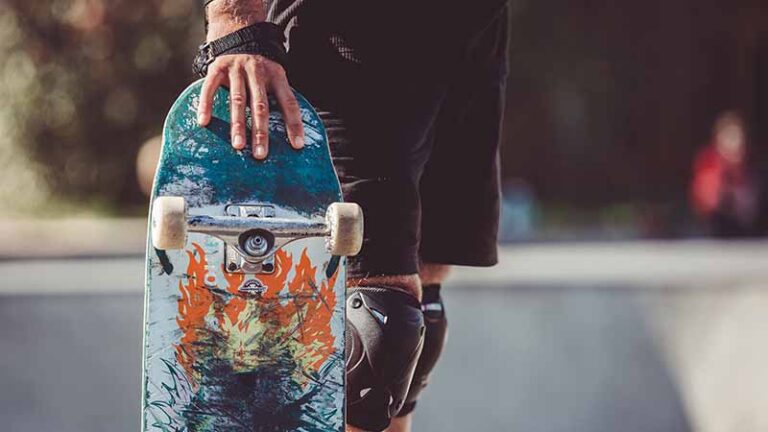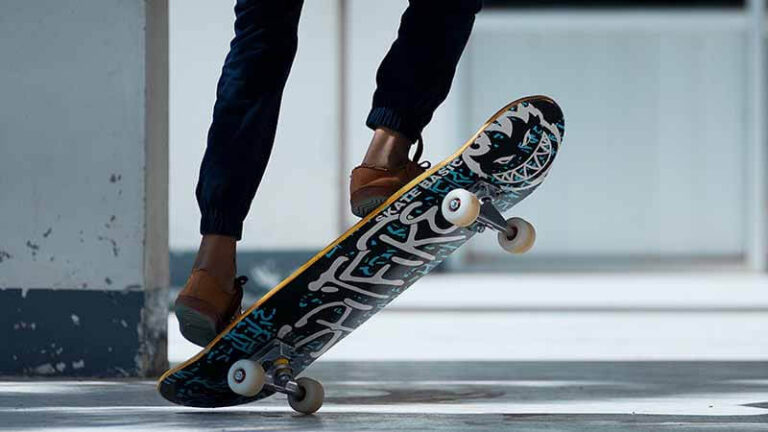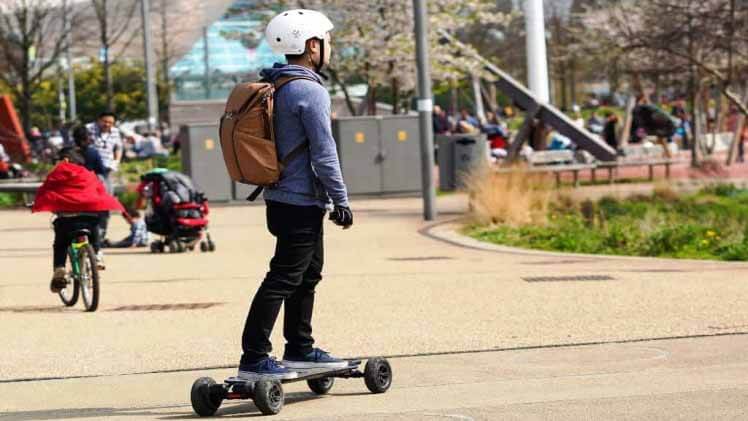How Tight Should Skateboard Trucks Be
Introduction
Skateboard trucks are an important part of any skateboard. These are the metal T-shaped pieces that are positioned beneath the skateboard deck and link the wheels to the deck. The trucks connect the skateboard’s deck and wheels, allowing it to spin and maneuver. They are composed of multiple elements, including the baseplate, hanger, kingpin, bushings, and axle, and are available in a variety of sizes and types. It is critical to select the ideal skateboard truck to provide proper performance, stability, and control while riding.
Importance of proper truck tightness
The tightness of skateboard trucks is critical in determining the performance, stability, and control of the skateboard. The truck’s tightness or looseness affects how the skateboard spins, carves, and responds to the skater’s actions. As a result, determining the optimum tightness degree based on the skater’s skill level, riding style, and personal choice is critical.
Appropriate truck tightness improves the maneuverability of the skateboard and reduces the danger of accidents and injuries. The skateboard may wobble or slip if the trucks are excessively tight or too loose, making it difficult to maintain balance and control. As a result, it is critical to pay attention to the tightness of the skateboard trucks in order to improve the riding experience and remain safe when riding.
What are skateboard trucks?
Anatomy of a skateboard truck:
A skateboard truck is made up of various components, including:
- Baseplate: The element that joins the truck to the skateboard deck.
- Hanger: The T-shaped component of the vehicle that houses the axle and wheels.
- Kingpin: A long bolt that connects the truck and allows the skater to tighten it.
- Bushings: Tiny rubber or urethane cushions that sit on either side of the kingpin and give the truck flexibility and rebound.
- Axle: The metal rod that passes through the hanger and links the two wheels.
Different types of skateboard trucks:
Skateboard trucks exist in a variety of sizes and shapes, each with its own set of advantages and disadvantages. The following are the most prevalent types of skateboard trucks:
- Standard trucks: The most common form of truck, also known as mid or standard trucks, are suited for all-around skating. They are medium in height and offer a good blend of stability and maneuverability.
- Low trucks: Because they are lower profile than regular trucks, they are great for street skating and technical tricks. They have better board control and stability but less turning capability.
- High trucks: These trucks have a higher profile than conventional trucks and are great for cruising and carving. They offer better turning capabilities at the expense of stability and board control.
The correct type of truck is determined by the skater’s riding style and preferences. Low trucks are preferred by skaters who prefer technical street skating and tricks, whereas high trucks are preferred by skaters who like cruising and carving. Basic trucks are suited for all-around skating and are an excellent place to start for novices.
Why is proper truck tightness important?
Tightness affects performance
The tightness of skateboard trucks influences the performance of the board by influencing how it responds to the skater’s motions. Tighter trucks offer more stability and control at higher speeds, making them ideal for downhill riding and cruising. Looser trucks, on the other hand, provide more turning and maneuverability, making them perfect for street skating and technical feats.
Tightness affects stability
Maintaining stability and balance when riding a skateboard requires proper truck tightness. If the trucks are excessively loose, the board will wobble, making control and balance difficult to maintain. If the trucks are too close together, the board will be difficult to turn, leading the rider to lose balance and control.
Tightness affects maneuverability
The tightness of skateboard trucks influences how readily the board spins and responds to the skater’s actions. Trucks with more slack give more mobility and are suitable for doing complex stunts and moves. Tighter trucks, on the other hand, provide greater stability and control at high speeds while providing less maneuverability.
In conclusion, appropriate truck tightness is critical for maximum skateboard performance, stability, and maneuverability. To have the greatest riding experience possible, skaters should modify the tightness of their trucks based on their riding style, skill level, and personal choice.
How tight should skateboard trucks be?
Factors to consider when deciding tightness:
There are various elements to consider while deciding on the tightness of skateboard trucks, including:
Skater’s weight:
Skaters that weigh heavier need tighter trucks to ride with stability and control. Lighter skaters, on the other hand, may choose looser trucks for increased mobility.
Skater’s skill level:
Tighter trucks may be preferred by beginning skaters because they provide more stability and control. As skaters acquire expertise and improve their skills, they may prefer looser trucks for greater maneuverability and flexibility of movement.
Type of terrain:
While deciding on truck tightness, consider the type of terrain being skated on. Tighter trucks are best for downhill and fast cruising, while looser trucks are excellent for street skating and technical feats.
Personal preference:
Finally, personal preference plays a vital effect in choosing the tightness of the skater’s trucks. Some skaters prefer tighter trucks for more stability and control, but others prefer looser trucks for more mobility and flexibility of movement.
It’s crucial to note that determining the proper tightness level may necessitate some trial and error. Skaters should experiment with different levels of tightness and notice how their skateboard reacts to discover the best level for their riding style and personal preferences.
How to adjust skateboard truck tightness:
Skaters can tighten their skateboard trucks using a variety of tools, including:
Using a skate tool:
A skate tool is a specialized tool intended particularly for changing skateboard trucks. It usually comes with a wrench to adjust the kingpin, a socket to adjust the axle nut, and a screwdriver to modify the hardware. To tighten or loosen the trucks with a skate tool, place it over the kingpin and crank it clockwise to tighten or counterclockwise to relax.
Using a wrench:
A normal wrench can be used to adjust the tension of skateboard trucks in the absence of a skate tool. Turn the wrench clockwise to tighten or counterclockwise to loosen the kingpin.
Using a coin or screwdriver:
If there is no wrench or skate tool available, a penny or screwdriver can be used to tighten skateboard trucks. Turn the coin or screwdriver clockwise to tighten or counterclockwise to loosen the kingpin.
To guarantee optimal tension, change the tightness of skateboard trucks in small increments and test the skateboard after each modification. Overtightening or loosening the trucks might jeopardize the skater’s stability and control, potentially leading to an accident or injury.
Effects of too-tight skateboard trucks
While optimum truck tension is required for optimal skateboard performance, stability, and maneuverability, too-tight trucks can have a number of negative consequences, including:
Negative effects on performance
Overly tight skateboard trucks can reduce the board’s mobility and responsiveness, lowering its performance. Tighter trucks may cause the board to seem unresponsive and sluggish, making intricate tricks and maneuvers difficult. This can be particularly troublesome for skaters who like a looser, more responsive board.
Negative effects on skateboard deck and bearings
Overly tight skateboard trucks can result in needless wear and tear on the deck and bearings of the board. Tighter trucks put greater pressure on the deck, causing it to wear out faster and perhaps damaging or seizing the bearings.
Negative effects on skater’s joints
Riding a skateboard with excessively tight trucks can put undue strain on the skater’s joints, particularly the knees and ankles. Tighter trucks make turning more difficult, which can require the skater to twist their body abnormally, perhaps leading to injuries over time.
In conclusion, extremely tight skateboard trucks can have a number of negative consequences, including decreased performance, increased board wear and tear, and potential joint strain for the skater. Skaters should modify the tightness of their trucks based on their riding style, skill level, and personal choice to minimize these negative consequences and get the best possible riding experience.
Effects of too loose skateboard trucks
While excessively tight skateboard trucks can have a detrimental influence on performance, stability, and maneuverability, excessively loose trucks can also have a negative impact, including:
Negative effects on stability
Skateboard trucks that are excessively loose might compromise the board’s stability, making it difficult to control and increasing the risk of accidents and falls. Loose trucks can cause the board to wobble and lose balance, which can be harmful to the skater, especially at high speeds.
Negative effects on maneuverability
While looser skateboard trucks can improve maneuverability, excessively loose trucks can be unpredictable and difficult to handle. Unstable trucks can make it difficult to pivot and change direction, making sophisticated tricks and maneuvers impossible.
Negative effects on control
Too-loose skateboard trucks can impair the skater’s control of the board, making it difficult to stop and change direction. Loose trucks can cause the skateboard to slide out from beneath the skater, resulting in falls and injuries.
In conclusion, too loose skateboard trucks can have a number of negative consequences, including diminished stability, poor maneuverability, and decreased control over the board. Skaters should modify the tightness of their trucks based on their riding style, skill level, and personal choice to minimize these negative consequences and get the best possible riding experience.
Conclusion
To summarize, optimum truck tightness is an important part of skateboard setup that can have a considerable impact on a skater’s performance, stability, and mobility. Determining the proper truck tightness can be a trial and error-process, and skaters should consider aspects such as their weight, skill level, terrain, and personal choice.
To obtain the best skateboard performance, stability, and maneuverability, proper truck tightness is required. The appropriate truck tightness can increase a skater’s control and make tricks and routines easier. Overly tight or loose trucks, on the other hand, can have a severe impact on performance, stability, and control, potentially resulting in accidents and injuries.
Skaters should consider numerous aspects while determining the proper truck tightness, including their weight, skill level, terrain type, and personal choice. These elements can have an impact on how the skateboard performs as well as how pleasant and safe it is to ride.
Skaters are encouraged to experiment with different tightness levels to find what works best for them. Skaters should experiment with different levels of tightness to see how it affects their performance and comfort, and then adjust until they discover the best setup for their own needs and preferences.
Read More,







